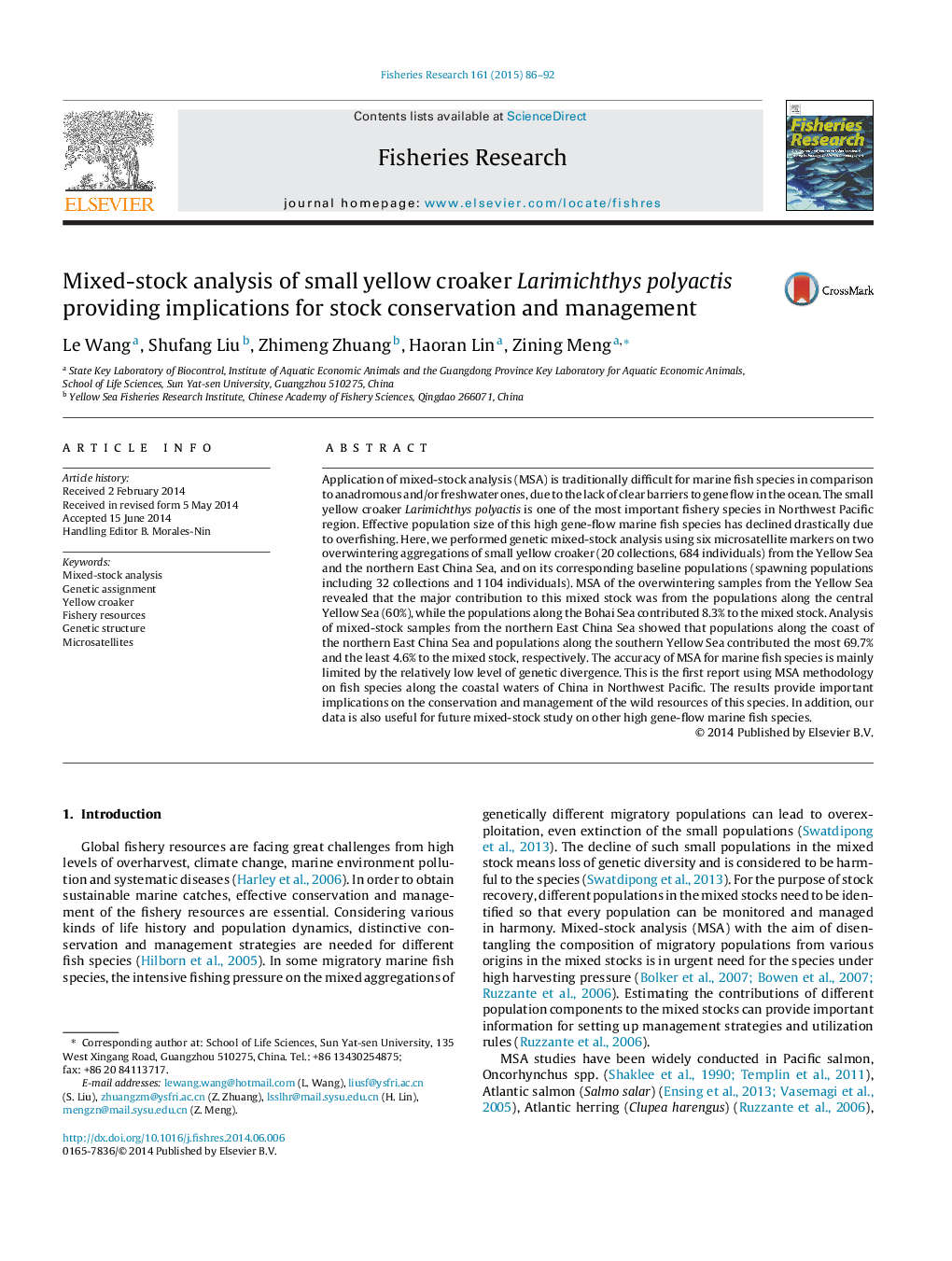| Article ID | Journal | Published Year | Pages | File Type |
|---|---|---|---|---|
| 6385776 | Fisheries Research | 2015 | 7 Pages |
Abstract
Application of mixed-stock analysis (MSA) is traditionally difficult for marine fish species in comparison to anadromous and/or freshwater ones, due to the lack of clear barriers to gene flow in the ocean. The small yellow croaker Larimichthys polyactis is one of the most important fishery species in Northwest Pacific region. Effective population size of this high gene-flow marine fish species has declined drastically due to overfishing. Here, we performed genetic mixed-stock analysis using six microsatellite markers on two overwintering aggregations of small yellow croaker (20 collections, 684 individuals) from the Yellow Sea and the northern East China Sea, and on its corresponding baseline populations (spawning populations including 32 collections and 1104 individuals). MSA of the overwintering samples from the Yellow Sea revealed that the major contribution to this mixed stock was from the populations along the central Yellow Sea (60%), while the populations along the Bohai Sea contributed 8.3% to the mixed stock. Analysis of mixed-stock samples from the northern East China Sea showed that populations along the coast of the northern East China Sea and populations along the southern Yellow Sea contributed the most 69.7% and the least 4.6% to the mixed stock, respectively. The accuracy of MSA for marine fish species is mainly limited by the relatively low level of genetic divergence. This is the first report using MSA methodology on fish species along the coastal waters of China in Northwest Pacific. The results provide important implications on the conservation and management of the wild resources of this species. In addition, our data is also useful for future mixed-stock study on other high gene-flow marine fish species.
Related Topics
Life Sciences
Agricultural and Biological Sciences
Aquatic Science
Authors
Le Wang, Shufang Liu, Zhimeng Zhuang, Haoran Lin, Zining Meng,
